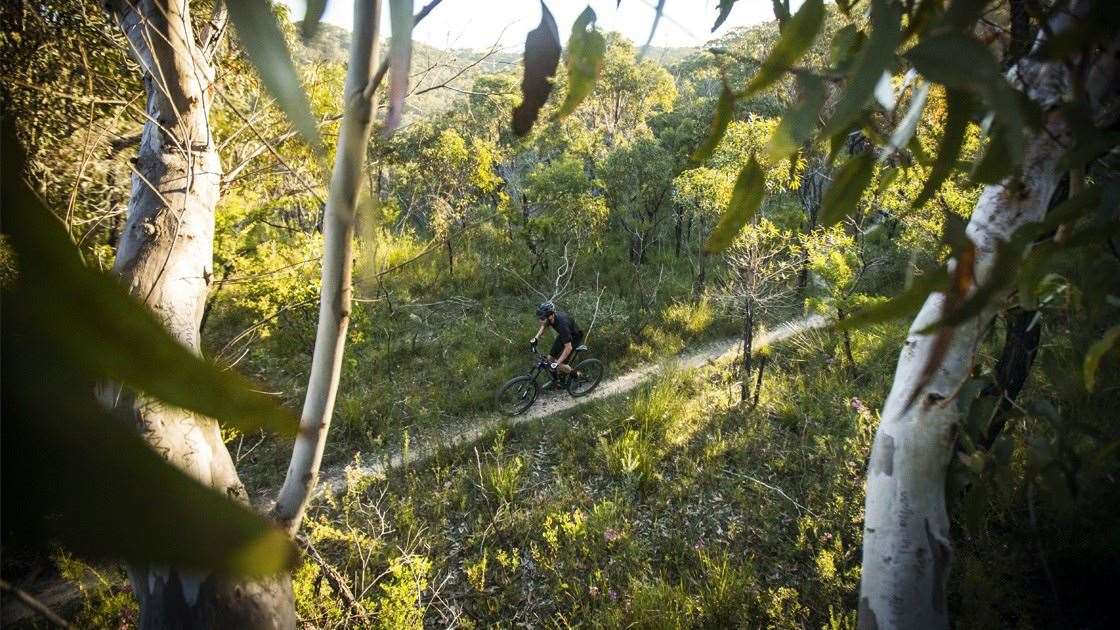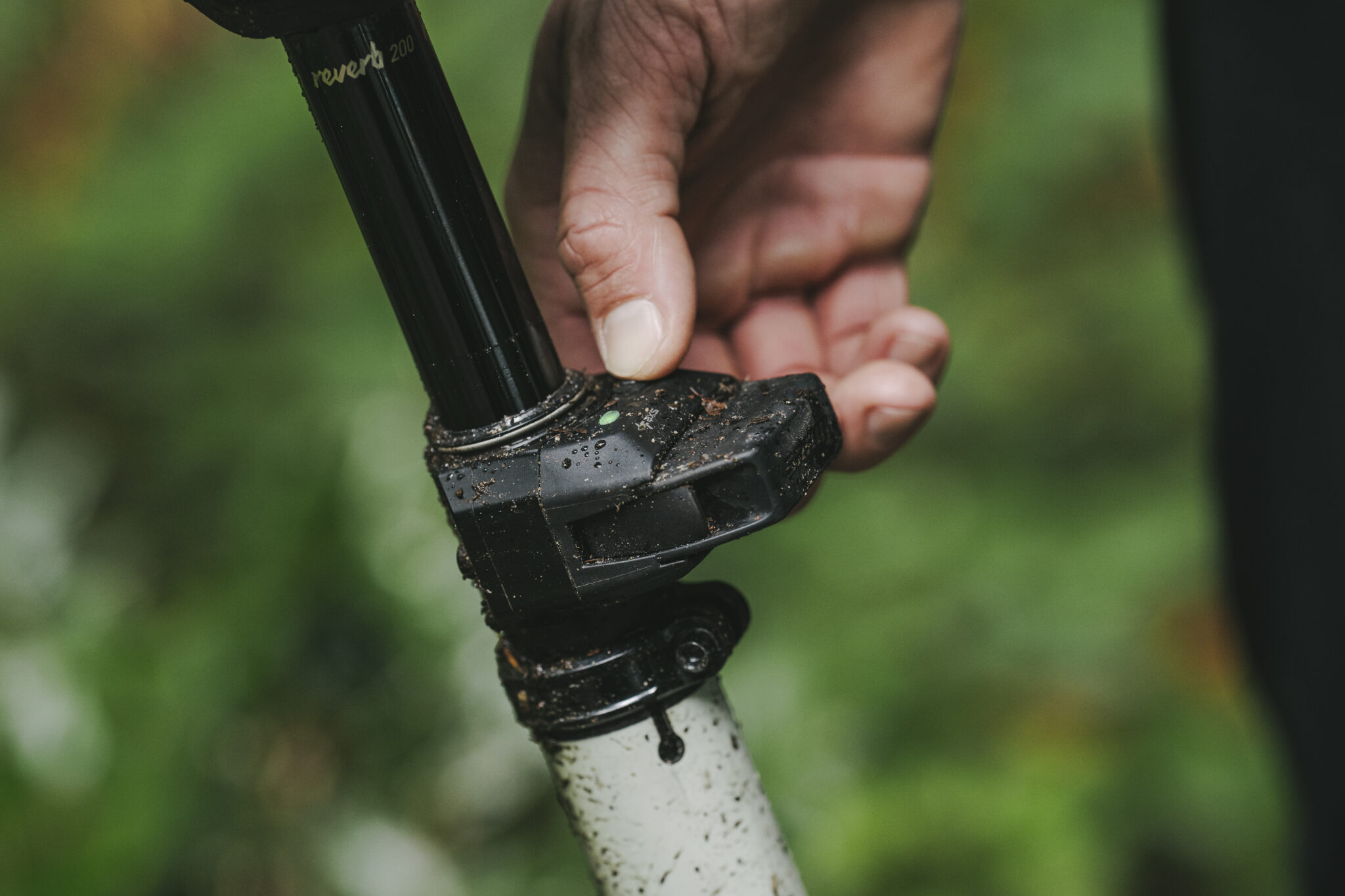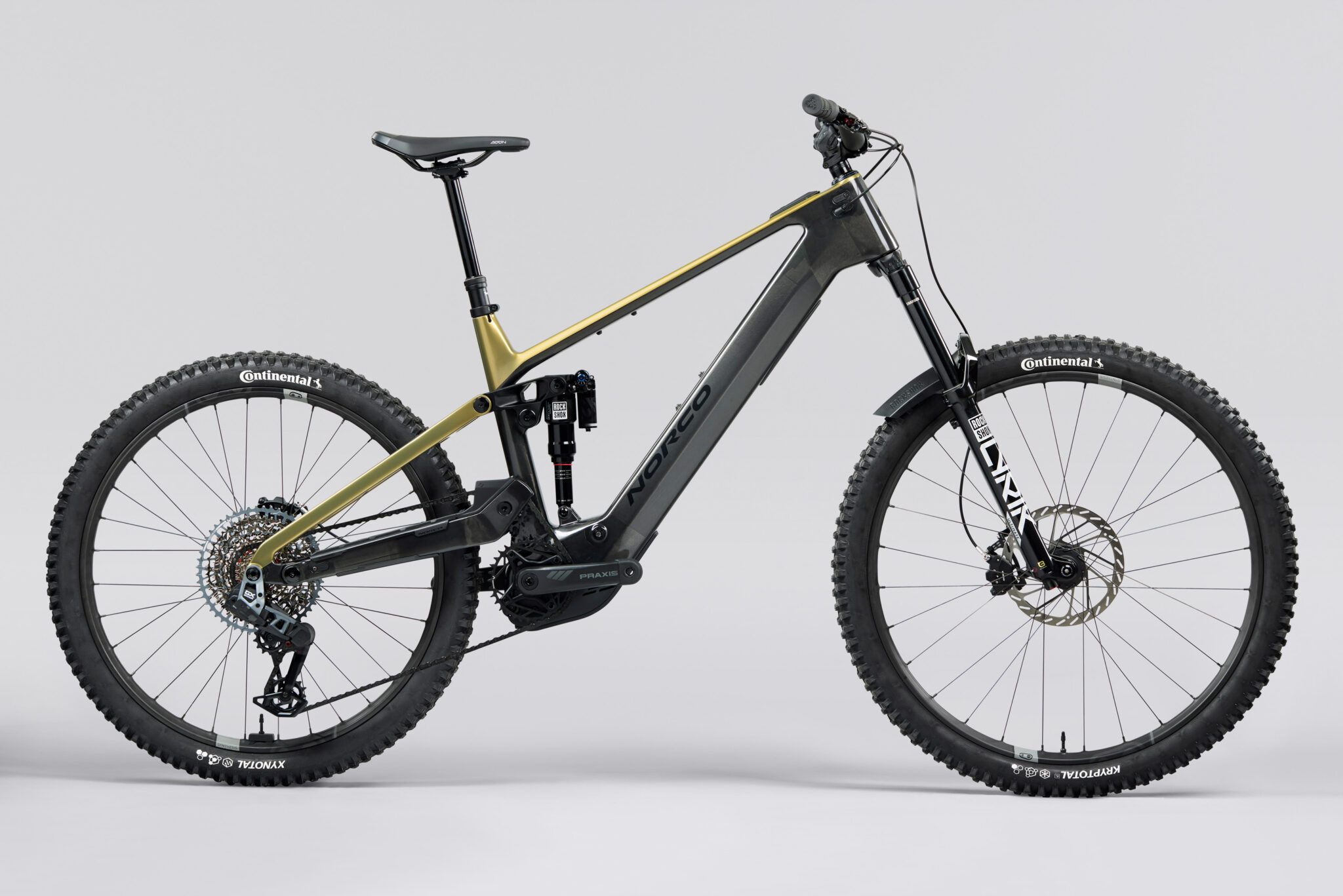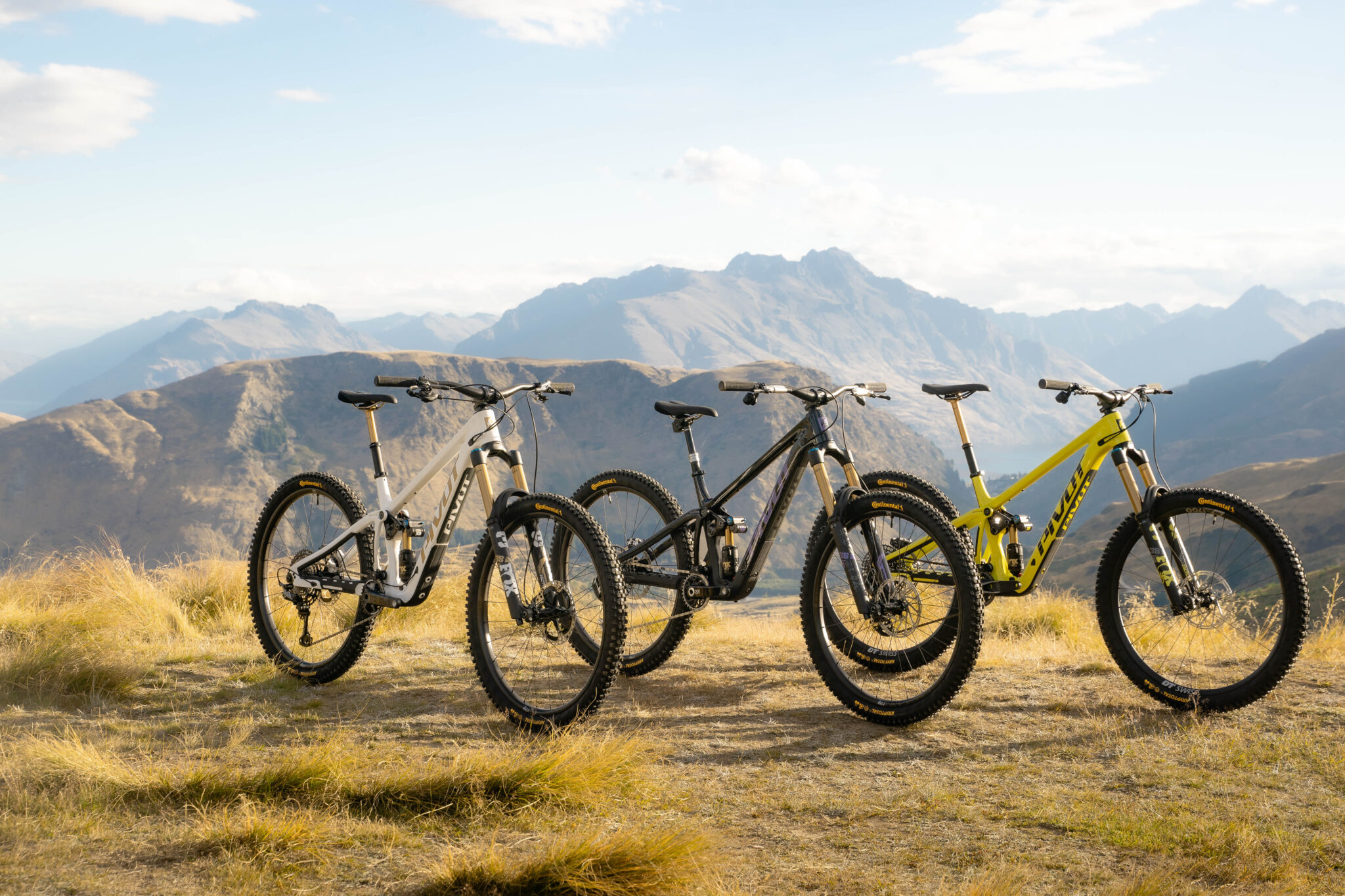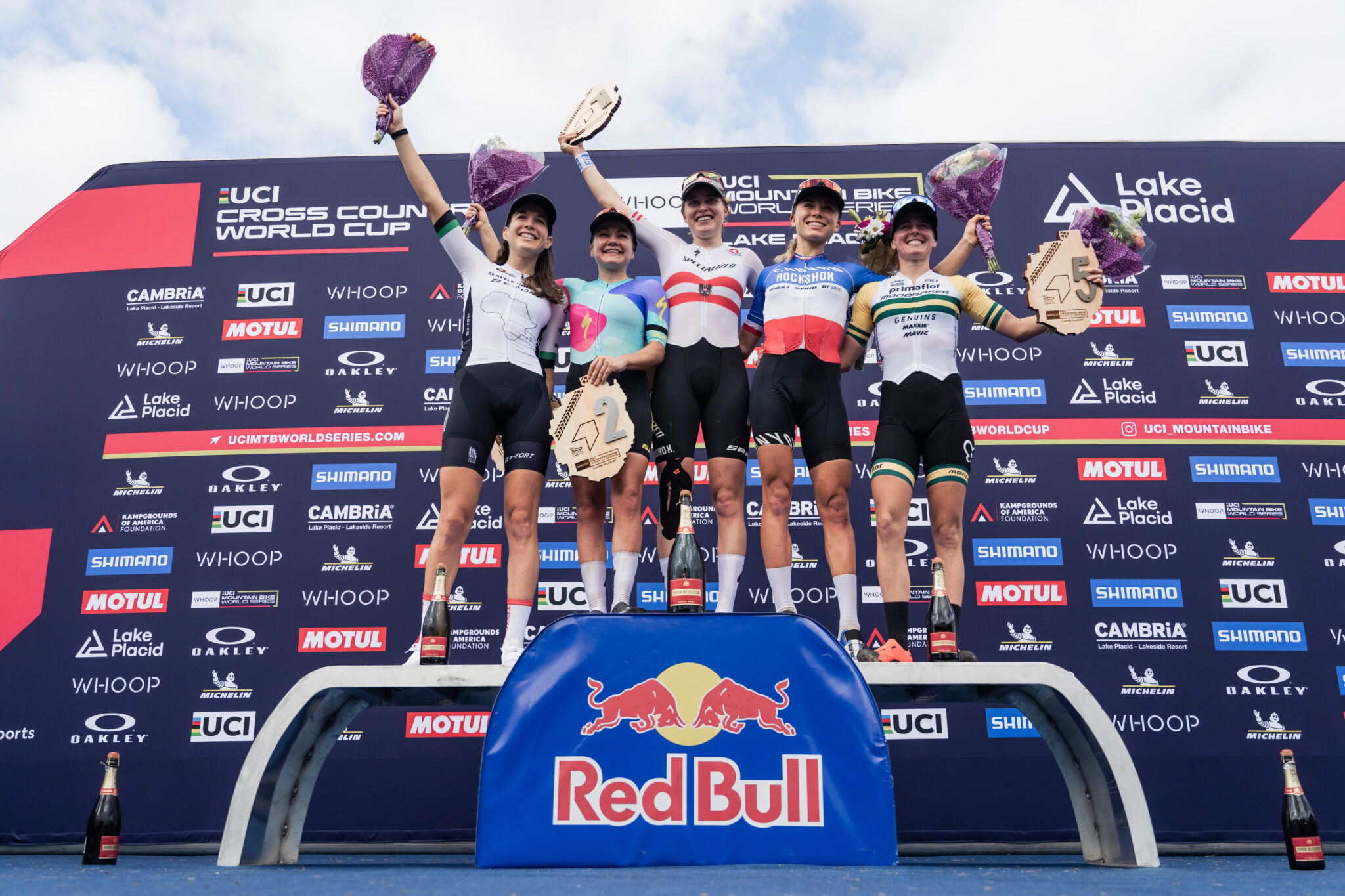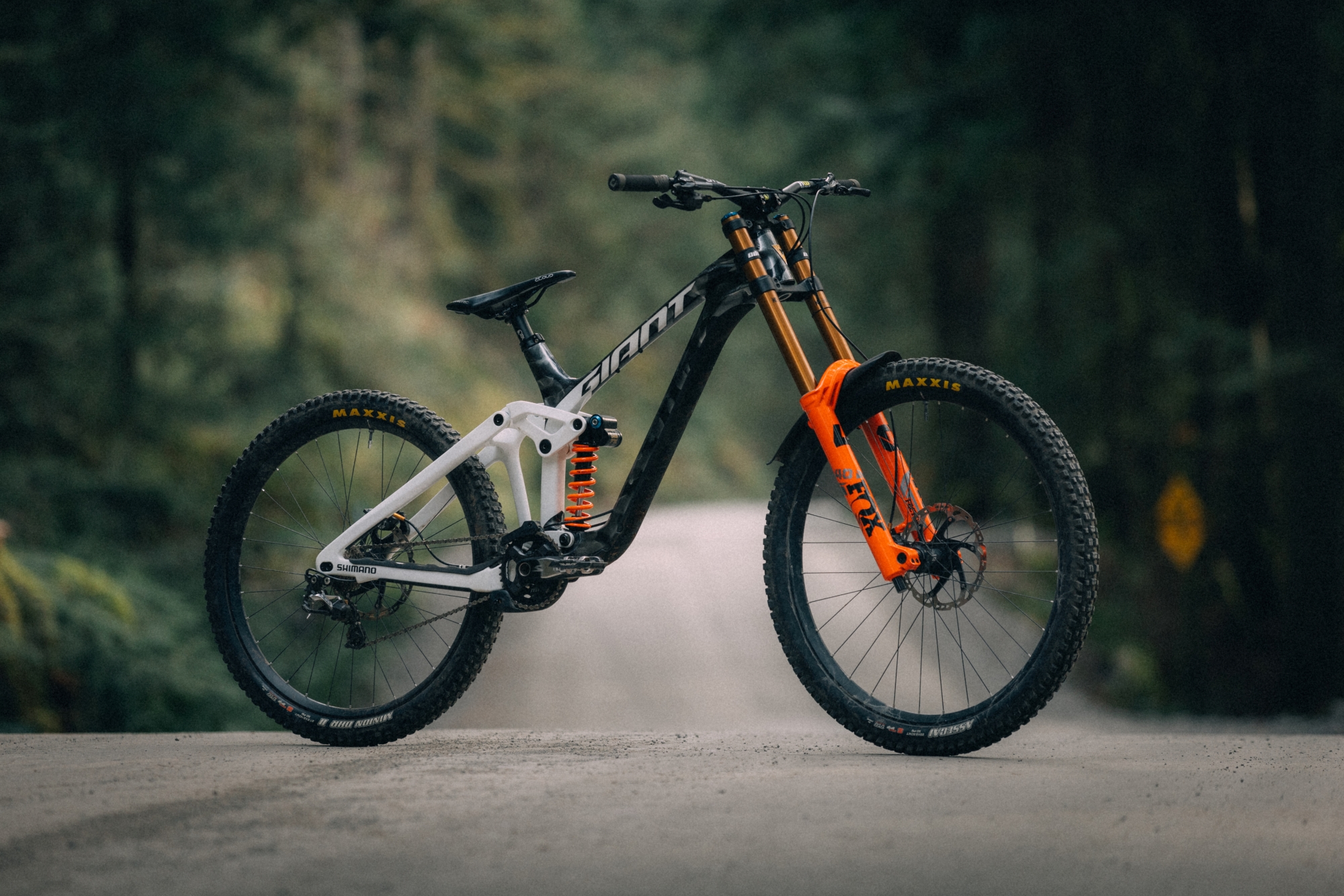Trek Slash 8
A 160mm travel bike packed with features designed to enable the modern mountain biker to explore the world of ‘enduro’.
As a producer of quality bicycles, Trek needs no introduction. From their early days competing with the Japanese for a share of the touring market, to the design and technology frontier of the 1990s and beyond Trek have always been there with the front runners endeavouring to push some boundaries. If you don’t know what a Trek Y-22 is, Google it right now and render yourself speechless. Proof that Trek have always been willing to take a new genre within mountain biking and explore it to its fullest.
The emergence of the enduro category within our sport over the last couple of years has seen most manufacturers working on an ‘enduro specific’ bike, each with their individual take on the versatility and functionality that the genre requires. Enter the stealthy 2015 Trek Slash 8, a 160mm travel bike packed with features designed to enable the modern mountain biker to explore the world of ‘enduro’.
Initial Impressions
The first thing that you’ll notice when viewing the Slash in the flesh is the long, low nature of it. With a 1205mm wheelbase, 110mm head tube and a super slack 65.6 degree head angle out of the box the Slash screams out ‘I wanna go down hill!’ While a lot of manufacturers have opted for the very 2014-15 neon look-at-me paint schemes the Slash is understated in full matte black and silver highlights and should still look good in a few years when the current colourways are about as cool as riding recumbent bicycles with reflectors and zip ties in your helmet.
Getting up close and personal there are a bunch of details that reveal the amount of thought that has gone into the final production Slash 8. Internal cable routing for shifting and RockShox Reverb Stealth seatpost are almost a given for an enduro bike but Trek have added mounts for an externally routed dropper as well, so customers that already own a dropper don’t need to use cable ties to make it work. Nice.
The connection between the seatstay and the suspension linkage feature Trek’s patented Mino Link pivot. It’s a system designed to allow the rider to further slacken the head angle to 65 degrees and lower the bottom bracket by almost ten millimetres. Adding to the adjustability of the rear end is the RockShox Pike RC 2-position fork which runs at 160mm of travel wide open but can be dropped quite easily on the fly to 130mm. On paper these feature tell a story of versatility that we were eager to explore on the trail. One of the big enemies of full suspension bikes in general but especially those of longer travel like the Slash, is brake induced suspension inactivity. Trek designed their Anti Braking Pivot as the ultimate counter to the brake-jack demons. Many similar looking frame designs feature a pivot either just in front of or just above the rear axle. The ABP system pivots around the rear axle limiting changes in chain length as the rear wheel moves. Again, we were curious to feel this on the trail.
Parts-wise the Slash 8 features Shimano SLX shifters and XT rear derailleur with a SRAM X7 front mech. RaceFace Ride crankset with 22/36 rings let you get the power down and Shimano SLX brakes make sure you can slow down. With 200mm front and 180mm rear rotors you can be pretty sure there’s some power there. The aforementioned RockShox Pike RC is paired with their Monarch Plus rear shock. Trek’s in-house parts and accessories brand Bontrager takes care of handlebar, stem, grips, saddle, tyres and 27.5 inch wheels, both with thru axles. A few years ago a 690mm handlebar would have been considered wide but it’s 2014 and the standard bar on the Slash is noticeably narrow looking now that we’re so used to seeing handlebars in the seven hundreds.
We raised a slight eyebrow at our 19.5 inch test Slash’s 14.6kg weight, especially when combined with it’s $4899 price tag – a number that will get you a similarly specced carbon bike from a few of Trek’s biggest competitors. But there were a lot of details that sparked our interest and it was with excitement that we headed to the trails.
On The Trail
Rolling from the car park through some flat, smooth singletrack it was instantly obvious that ‘bar width was going to be an issue. In Trek’s defence manufacturers are only really supposed to spec ‘bars under 700mm on bikes in this country but it’s a rule few adhere to and riding the 690s definitely took some adjusting to.
Climbing to the top of the first real descent the efficiency of the ABP rear end was obvious and seated climbing in an easy gear was pretty light work. I’m a big fan of one-by-eleven group sets but on a bike at this weight having a twenty two tooth inner chainring is a beautiful thing. Even with the Mino Link in the more upright position we noticed the front end having a serious tendency to lift off the ground slightly and wander around on steeper seated climbs. This is where the adjustable travel Pike really shines. Without stopping, a quick flick of the dial on the left fork leg and a small push on the bars drops the fork to 130mm and front wheel traction and steering precision is instantly improved. Out of the saddle we certainly noticed some rear wheel movement that seemed to lessen the harder we were on the gas. Gritting your teeth and sprinting up pinch climbs instead of dumping a bunch of gears was a whole lot more fun, if a little taxing. Lesson learned, this bike wants to be ridden hard and will reward for your effort!
The RaceFace cranks have a very pronounced centre around the spline reminiscent of their older cranksets and we clipped ankles on this on more than one occasion.
A little breather at the top of longer climbs and it was time to do what this bike had been begging to do all ride. Fork out to 160, dropper down and it was game on. Even with the Slash set up ‘steep’ it felt more natural descending than many other enduro styled bikes we’ve tested. Again the weight and ‘bar width of the Slash meant that a lot of rider input was required but after a couple of rides we switched out to a 780mm ‘bar and the dynamic of the bike changed dramatically and a lot less effort was needed to throw the bike around and negotiate technical sections. Getting a little off your line, scaring yourself and ending up in the rough stuff never got as bad as we thought it was going to, the super plush 160mm front and rear end eating everything we threw at it. Floating off drops, and negotiating step ups was easy thanks to the relatively short top tube.
The Bontager XR4 tyres that come standard with the Slash might be good for loamier, more moist trails but they really let the Slash down on the sandier, loose over hardpack trails we tend to have in Australia. Viewed from above there is a definite line just outboard of the centre tread where no knobs overlap each other. Upright or leaned over all the way they are great but the transition was unpredictable and at times off-putting with the front wheel especially letting go and then finding itself again suddenly. Just like with the handlebars, your Trek dealer will get you sorted with what you need for your fit and trails before you roll out the door.
Our Take
If you are looking for a bike to actually race some Gravity Enduro events, or you want your next bike to be able to handle some recreational downhilling while still being trail friendly, the Slash 8 is definitely a bike you should consider. A tyre change and some wider bars would make it a fantastic bike for trails where descending speed is your priority and the climbs are short and sharp. Looking further up the Slash tree to the full carbon 9.8 would probably be the better option for those seeking a little more all-day riding fun in a lighter weight package.
Three things you liked about the bike
- Adjustable geometry and travel
- Stealthy, timeless aesthetic
- Confidence inspiring descending
Three things you would change about the bike
- Wider handlebars please!
- Needs a tyre change to suit your trails
- Could drop some weight for the price
Essentials
Brand: Trek
Model: Slash 8
RRP: $4899
Weight: 14.7kg (as tested)
Distributor: Trek Australia
Specs
Available Sizes: 15.5, 17.5, 18.5, 19.5, 21.5
Frame Material: Alpha Platinum Aluminium
Fork: RockShox Pike | RC 2-Position Solo Air
Shock: RockShox Monarch | Plus R DebonAir
Shifters: Shimano SLX
Derailleur: Shimano XT rear, SRAM X7 front
Crank: Raceface Ride, 36-22
Bottom bracket: Pressfit
Chain: KMC X10
Cassette: Shimano HG50, 11-36 10sp
Hubs: Bontrager Duster Elite
Rims: Bontrager Duster, Elite tubeless ready
Tyres: Bontrager X4 TR 27.5×2.35
Brakes: Shimano SLX w/200mmF, 180mmR rotors
Stem: Bontrager Rhythm Comp, Zero degree
Handlebars: Bontrager Rhythm Elite, 690mm, 15mm rise
Seatpost: RockShox Reverb Stealth
Saddle: Bontrager Evoke 2
Website: www.trekbikes.com/au/en/bikes/mountain/enduro/slash/
Rider Bio
Riding Experience: Riding biketrials for 15 years. Spent a LOT of time working out how to ride bikes over stuff you generally shouldn’t ride bikes over. Recreational endurance racer and bikepacker. Has a beard.
Generally rides: Niner Jet 9 RDO, Salsa Mukluk Fatbike, GT Power Series 24 BMX
Height: 179cm
Weight: 74kg
Bike Test Track: Royal National Park

